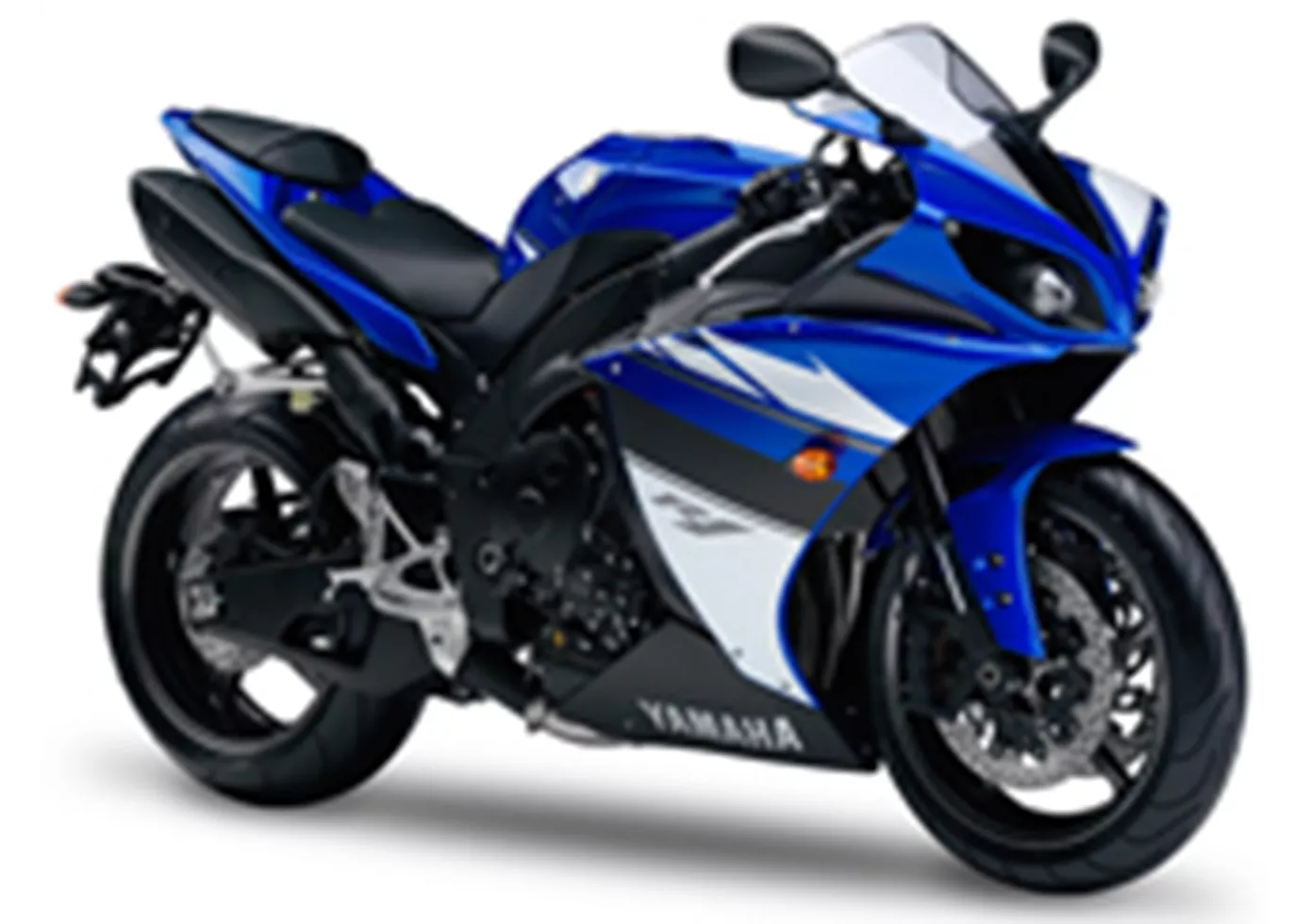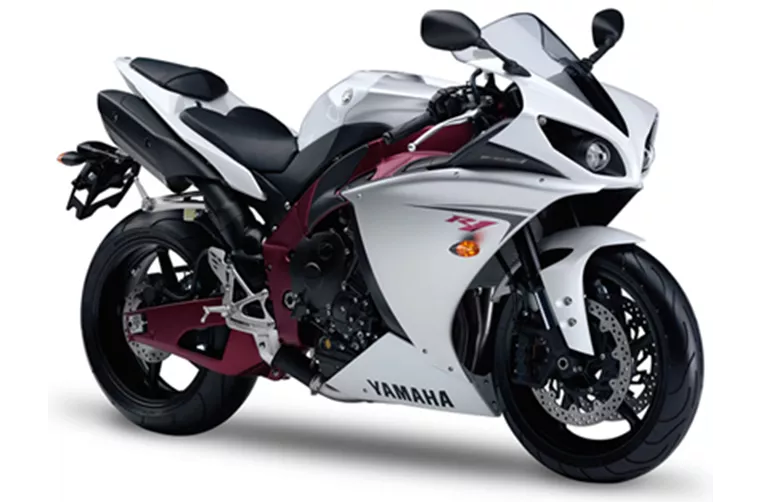Yamaha R1 2009 vs. BMW S 1000 RR 2015

Yamaha R1 2009

BMW S 1000 RR 2015
Vue d’ensemble - Yamaha R1 2009 vs BMW S 1000 RR 2015
The Yamaha R1 2009 and the BMW S 1000 RR 2015 are both powerful and high-performance supersport motorcycles. However, there are several notable differences between the two models.
In terms of engine specifications, both motorcycles have inline 4-cylinder engines. The Yamaha R1 2009 has a slightly smaller bore of 78 mm compared to the BMW S 1000 RR 2015's 80 mm. The stroke of the Yamaha R1 is 52.2 mm, while the BMW S 1000 RR has a stroke of 49.7 mm. The Yamaha R1 has an engine power of 182 HP, while the BMW S 1000 RR boasts a higher power output of 199 HP. The torque of the Yamaha R1 is 115.5 Nm, while the BMW S 1000 RR has a torque of 113 Nm. The compression ratio of the Yamaha R1 is 12.7, while the BMW S 1000 RR has a slightly higher compression ratio of 13. Both motorcycles have a displacement of around 1000 cc.

Yamaha R1 2009
In terms of suspension, both motorcycles feature telescopic forks at the front and swing arm suspension at the rear. The chassis of both motorcycles is made of aluminum, providing a lightweight and rigid frame. However, the Yamaha R1 has a Deltabox frame, while the BMW S 1000 RR has a Twin Tube frame.
Both motorcycles have double disk brakes at the front and 17-inch wheels. The wheelbase of the Yamaha R1 is 1415 mm, while the BMW S 1000 RR has a slightly longer wheelbase of 1425 mm. The seat height of the Yamaha R1 is 835 mm, while the BMW S 1000 RR has a lower seat height of 815 mm. The fuel tank capacity of the Yamaha R1 is 18 liters, while the BMW S 1000 RR has a slightly smaller fuel tank capacity of 17.5 liters.
In terms of strengths, the Yamaha R1 2009 is praised for its sophisticated sound, good feeling for power delivery, easy handling, hydraulic spring preload, and high level of workmanship. On the other hand, the BMW S 1000 RR 2015 is praised for its superb shift assistant, incredibly powerful and rev-happy engine, great range of accessories, and the availability of race-ready data logging and calibration tools.

BMW S 1000 RR 2015
However, there are also some weaknesses associated with each motorcycle. The Yamaha R1 2009 has a suboptimal seating position and may be somewhat difficult to corner over long distances. On the other hand, the chassis of the BMW S 1000 RR 2015 can quickly reach its limit in the hands of professionals.
In conclusion, both the Yamaha R1 2009 and the BMW S 1000 RR 2015 are high-performance supersport motorcycles with their own strengths and weaknesses. The Yamaha R1 offers a good balance of power and handling, while the BMW S 1000 RR excels in terms of engine performance and available accessories. Ultimately, the choice between the two models will depend on the rider's preferences and priorities.
Caractéristiques techniques Yamaha R1 2009 par rapport à BMW S 1000 RR 2015
Avantages et inconvénients en comparaison
Avantages et inconvénients en comparaison
Yamaha R1 2009

Bien entendu, le nouveau moteur R1 a également subi tous les tests de résistance rigoureux de Yamaha et est livré avec les mêmes garanties que les autres motos Yamaha. En effet, jusqu'à présent, ce sont précisément les thèmes de la durabilité et de la fiabilité qui empêchaient la production en série d'un tel moteur.
BMW S 1000 RR 2015

Avec des faits concrets, la BMW peut encore marquer des points en 2015. Si vous aimez les performances de pointe, vous devez acheter la BMW. Elle vire en haut avec une puissance incroyable et distancie le reste du peloton dès 200. Les pilotes grands et lourds pourront en profiter encore plus. BMW n'a pas choisi la facilité avec cette machine et a mis sur pied une moto très universelle. Si l'on faisait un test comparatif avec 50 pilotes différents (du rookie au professionnel), la BMW obtiendrait la meilleure moyenne de toutes les motos de 1000 cm3. Le châssis électronique, mais aussi les aides à la conduite, permettent aux professionnels d'aller vite et aux débutants de rouler en toute sécurité. Une recommandation top pour un groupe cible très large. Les pilotes amateurs très rapides ne seront pas satisfaits à 100% par le châssis de série. Ceux qui ne souhaitent pas modifier le châssis devraient plutôt se tourner vers une R1M, une Panigale S ou encore une RSV RF. Quant à ceux qui modifient de toute façon leur moto, ils trouveront avec la S 1000 RR la base la plus puissante et la plus universelle. De manière surprenante, cette machine à la puissance d'ours se comporte également très bien sur les routes de campagne. Dans l'ensemble, cela ressemble à un compromis, mais dans la pratique, ce n'est jamais le cas.
Comparaison des prix Prix moyen du marché Yamaha R1 vs BMW S 1000 RR
There are a few key differences between a Yamaha R1 2009 and a BMW S 1000 RR 2015. It takes less time to sell a Yamaha R1 with 45 days compared to 77 days for a BMW S 1000 RR. Since model year 2005 1000PS.de editors have written 80 reviews for the Yamaha R1 and 135 reviews for the BMW S 1000 RR since model year 2010. The first review for the Yamaha R1 was published on 4/28/2003 and now has more than 3,900 views. This compares to more than 4,000 views for the first review on BMW S 1000 RR published on 4/16/2008.




















